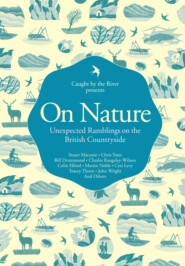По всем вопросам обращайтесь на: info@litportal.ru
(©) 2003-2025.
✖
How Can I Stop Climate Change: What is it and how to help
Настройки чтения
Размер шрифта
Высота строк
Поля
carbon and carbon stores
Often described as the building block of life, carbon is present in all living things. It is the fourth most common element in the universe and is found in millions of different compounds. Commonly found in mineral form as coal, it is also in oil and methane (the main constituent of natural gas). When burnt, carbon combines with oxygen to form carbon monoxide (CO) and, more often, carbon dioxide (CO2). The world’s oceans, forests and soils absorb huge quantities of carbon, in the form of carbon dioxide, from the atmosphere.
Plants take carbon dioxide out of the atmosphere through photosynthesis. When a tree is cut down and burnt, some of the stored carbon in the tree converts back into carbon dioxide and escapes into the atmosphere.
Oceans absorb around half of the carbon dioxide in the atmosphere mostly as dissolved bicarbonate. Like plants, plankton in the sea take up carbon dioxide through photosynthesis. But as oceans warm they absorb less. The increasing concentration of carbon dioxide in the atmosphere is also increasing the acidity of the oceans and damaging marine life.
Organic material in soil takes carbon dioxide out of the atmosphere. More carbon is held in the world’s soils than in the atmosphere. But the capacity of the soil is limited and over time the amount of carbon dioxide escaping into the atmosphere will increase.
methane
Methane (CH4) is a naturally occurring greenhouse gas but levels in the atmosphere have more than doubled since the pre-industrial era. Farming contributes a huge amount: one dairy cow produces an estimated 500 litres of methane daily, mainly when burping – and there are some 10 million cattle in the UK. But methane also comes from landfill sites, burning fossil fuels, wetlands and drying peat bogs (swamp gas). It has a relatively short life span, of 11-12 years. Even so, methane is a powerful greenhouse gas, absorbing 20-25 times more infrared energy than carbon dioxide, and it is responsible for 24 per cent of global warming.
AN ILL WIND:
Domestic animals produce about a quarter of the world’s methane emissions – around 100 million tonnes annually. That’s more in carbon dioxide equivalent than emissions from transportation.
nitrous oxide
Like other greenhouse gases levels of nitrous oxide (N2O) have increased as a result of human activity. Chemical fertilisers and the burning of wood and fossil fuels are contributors. Nitrous oxide stays in the atmosphere for around 150 years and is responsible for about a tenth of global warming.
halocarbons
CFCs (chlorofluorocarbons), HCFCs (hydrochlorofluorocarbons) and HFCs (hydrofluorocarbons) – a group of greenhouse gases collectively known as halocarbons – have been building up in the atmosphere as a result of industrial processes. For many years CFCs were used in aerosol sprays and fridges. But scientists realised that these gases were damaging the Earth’s ozone layer – which blocks out harmful ultraviolet radiation from the sun. Public opinion and environmental campaigners helped persuade politicians to phase out CFCs. Although some of the gases used to replace them (HFCs and HCFCs) are also greenhouse gases, they are responsible for less than 3 per cent of global warming.
Carbon dioxide is the main greenhouse gas
Each greenhouse gas has a different capacity to cause global warming. This, combined with the actual amounts in the atmosphere, gives the ‘global warming potential’ – shown in this case for the next 100 years. Carbon dioxide is the main culprit, followed by methane. Source: Met Office Hadley Centre
the montreal protocol
The Montreal Protocol on Substances that Deplete the Ozone Layer has been described as the most effective international agreement designed to tackle environmental pollution, with developing countries being offered money to help phase out CFCs. Twenty years after it was signed CFC levels began to fall and experts are now predicting that the ozone layer will recover in the next 100 years.
ozone
Ozone in the upper atmosphere acts as a greenhouse gas while in the lower atmosphere it is part of summer smog. It may have an indirect effect on climate change. High concentrations of low-atmosphere ozone prevent plants taking up carbon dioxide.
water vapour
Although water vapour is a greenhouse gas – and the most abundant of them – human activity has only a small direct effect on the amount of it in the atmosphere. The precise role of water vapour and clouds in global warming is unclear, but scientists know that as the atmosphere warms it can hold more water vapour, causing more clouds to form. Clouds in turn can have an insulating effect, trapping warm air. But clouds may also cool things down by reflecting sunlight away from the Earth.
BLUE SKY SINKING:
The oceans absorb carbon dioxide from the atmosphere in a cycle that takes around 1,000 years to complete. The extra pollution thrown into the atmosphere by humans is distorting this process.
rising levels of greenhouse gases
Levels of greenhouse gases in the atmosphere are now more than a third higher than they were in pre-industrial times.
Scientists have compared recent rises in temperature and levels of greenhouse gases with historic data based on ice samples and tree rings. On a graph this data produces a ‘hockey stick’-shaped curve depicting a rapid increase in temperature from 1900 onwards. Levels of carbon dioxide are now rising faster than at any time in the past 20,000 years.
In 2007 the Intergovernmental Panel on Climate Change (IPCC) concluded that human activities are very likely to have been responsible for most of the global warming in the past 50 years. And because some greenhouse gases stay in the atmosphere for many years, current emissions will go on warming the Earth for centuries.
Rising levels of greenhouse gases –‘the hockey stick’ curves
keeling curve
In 1958 US scientist Dr Charles D Keeling at the Mauna Loa Observatory in Hawaii began measuring the concentration of carbon dioxide in the atmosphere. Plotted on a graph, his results form a rising curve now known as the Keeling Curve. This shows that carbon dioxide levels vary with the seasons – by as much as 3 per cent over 12 months – because many trees in the Northern Hemisphere do not take up carbon dioxide during winter. Over and above this variation, however, we can detect a steady increase in the past 50 years.
Dr Keeling was the first scientist to report that carbon dioxide in the atmosphere was increasing, alerting the world to the threat of climate change.
dimming – hot or cold?
Whereas greenhouse gases warm the atmosphere, aerosols and solid particles reflect heat and light from the sun and prevent sunlight reaching the ground. This has a cooling effect – sometimes referred to as global dimming – and is caused by pollution from industrial processes, transport, wood-burning stoves, forest fires and volcanoes. Conversely, particles such as dust and soot can also increase warming by absorbing sunlight.
No one knows the precise impact of such pollution, but it may be masking the full impact of the greenhouse gases. It may also play a role in cloud formation, causing further complex influences on the climate. Areas downwind of pollution sources may suffer regional impacts. A recent study observed that a brown cloud of pollution over the Indian Ocean was warming the sea and could be contributing to melting of glaciers in the Himalayas.
snapshot of our future climate:
less snow and ice
more severe storms and floods, particularly along coasts
more rainfall at higher latitudes
less rainfall over land in the tropics – more drought
less predictable winds, rain and temperature
more heatwaves
the threat of extreme change
Some scientists believe that warming presents a risk of more extreme irreversible climate change as the Earth’s natural systems swing out of balance.
Thawing permafrost: Peat bogs in Siberia and Alaska are thawing, releasing carbon dioxide and methane that they have stored for thousands of years.
The albedo effect: melting snow and ice exposes rocks, trees and tundra which are less reflective so they absorb more of the sun’s energy, adding to warming and melting more snow.
Ocean warming: Methane deposits, known as clathrates, are stored in sediments under the oceans. Warming might lead to the release of huge quantities of methane gas into the atmosphere.
Scientists say there is a greater than 90 per cent chance that the great ocean conveyor – the Meridional Overturning Circulation – will slow down this century, and it could switch off in the longer term. This would imply a huge change in natural cycles.
Recent studies by NASA director and scientist James Hansen suggest that ice sheets can melt much faster than the thousands of years envisaged by the IPCC. This is because melt water under the ice sheet speeds up the breaking up and melting of the ice. Hansen also found that other greenhouse gases – and soot particles – are speeding up melting in the Arctic. This is because the dark flecks absorb more heat. As a result, he warned, an average temperature rise of just 1°C could lead to a sea level rise of between 2 and 6 metres. If Greenland’s ice sheets melt quickly this will change the temperature in the Atlantic ocean, with dramatic effects on the world’s weather systems.
If a small amount of human-induced global warming triggers massive natural warming, the result is likely to be climate change that happens over decades rather than centuries.
The great oceanconveyor belt Ocean currents redistribute heat around the planet, (below), for example bringing warm water from the tropics to the UK via the Gulf Stream, and cold water to Newfoundland, with striking effects on both countries’ climates. Source: IPCC.











